Cities: Skylines 2 review – a superb sequel suffering from technical issues

It’s Saturday and I sit down to play some Cities: Skylines 2 after lunch. Just for a little bit, I say to myself, and then I’ll catch some fresh air. Four hours fly by unnoticed before I check the clock the next time. It’s already starting to get dim outside. Just finishing this district, I tell myself, and then I’ll be off. I complete the task I set myself in what I legitimately thought was five minutes of time, but somehow the clock shows that another hour has passed. Time is very much relative once Colossal Order and Paradox Interactive’s city-builder has sunk its claws into you.
Like its predecessor, Cities: Skylines 2 is an enormous sandbox in which players can build the city of their dreams – or nightmares – from the ground up. You can play with finances enabled, which means you have to keep an eye on your budget and will be limited in your possibilities, or go wild with unlimited funds. You can also disable the game’s progression system in case you want all advanced building options right from the start. In a regular game, you unlock points as your city grows and invest them into whichever options you deem necessary. For example, the construction of a subway system usually needs to be unlocked by progressing through the tree for public transportation, but if you want your dream city to include underground trains right from the get-go, then the game affords you that freedom.
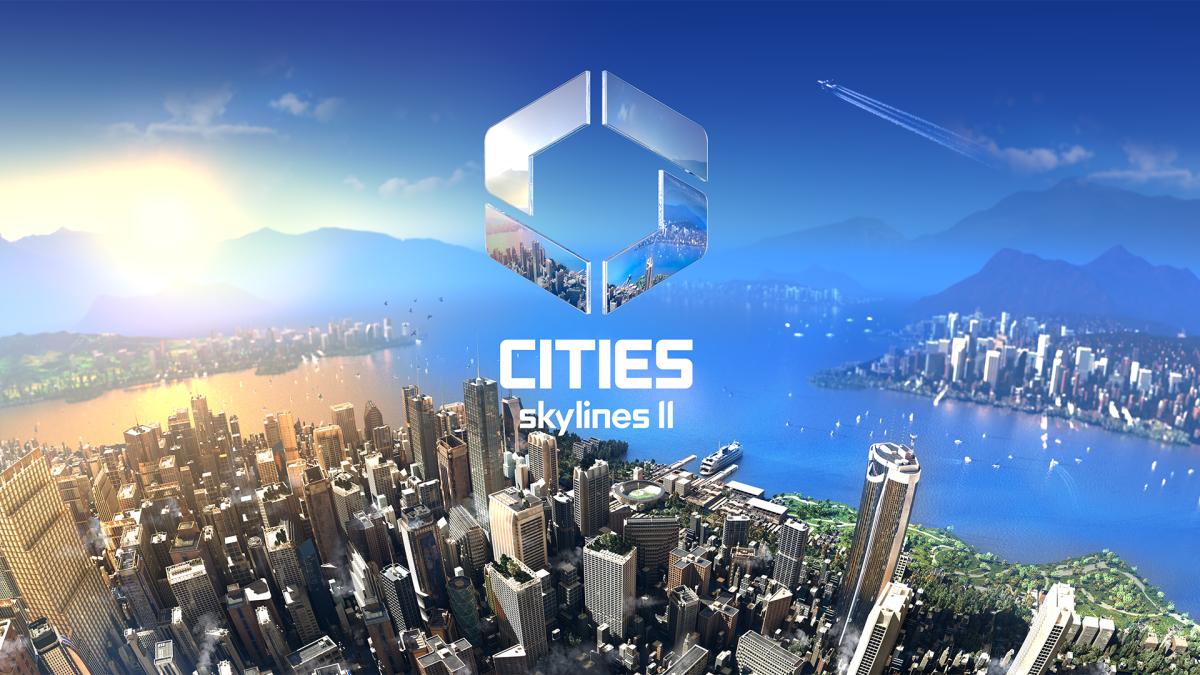
Freedom is really the name of the game. There is no story in Cities: Skylines 2. You choose from one of the available maps and from there the world is your oyster – you decide if you just want to build as populous a city as you can, design a dreamy university town, or go all-in on industry. The sandbox-nature of the title is what attracts large parts of the fan base in combination with its mechanical depth, but it also means that if you’re someone who has a hard time coming up with goals of your own, much of its beauty will be lost on you.
In terms of tools, Cities: Skylines 2 has vastly improved on its predecessor’s options, partly by including popular community-made solutions. Entire suburbs shoot up from the ground in mere minutes thanks to how easy it is to lay down roads (which contain water and electricity lines now). Roundabouts can also be built right from the beginning. It helps that Cities: Skylines 2 comes with fantastic explainers for each system the game has to offer, so even players without any city-building experience will be able to enjoy their time. You can look these little in-game guides up any time you need them, which is neat.
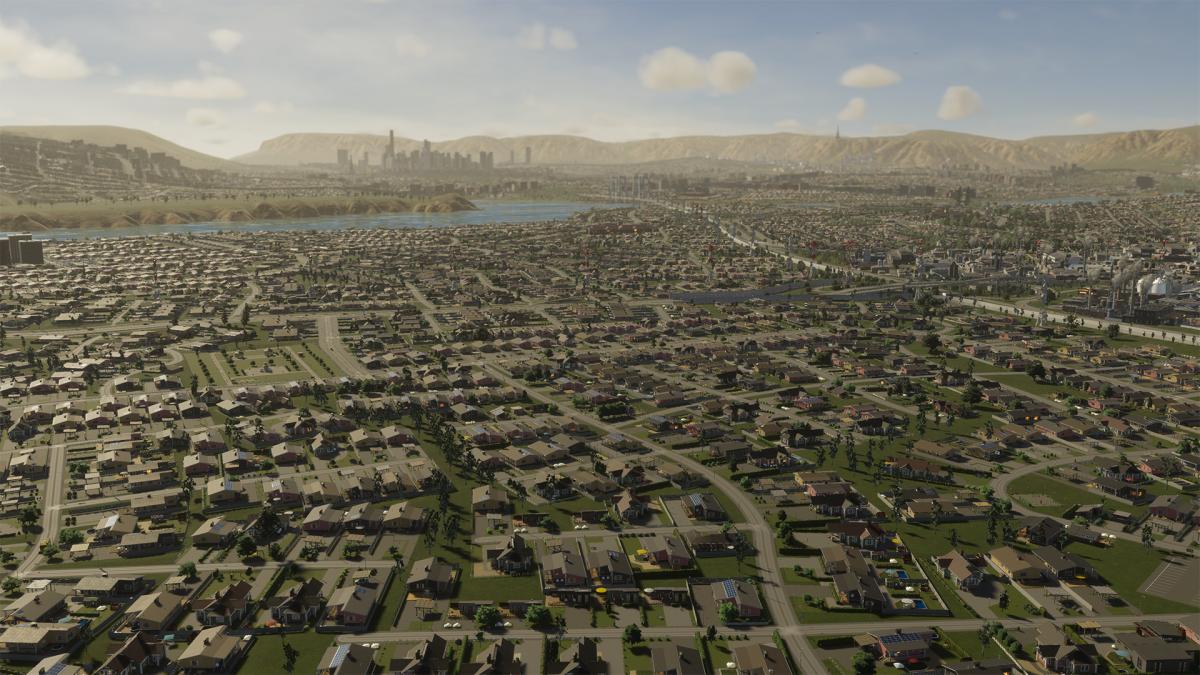
In addition to your regular housing, business, industrial, and office zones you can create special economic zones in which you can construct farms, mines, and other resource producers – if the areas provide those resources, of course. Sourcing coal for your power plant or oil for your chemical industry locally will greatly benefit your city’s economy, but you can also export goods. This is possible due to a new feature of Cities: Skylines 2 – outside connections.
You’re no longer isolated in the world. Roads, train tracks, and seas lead somewhere else now, opening up new possibilities to generate profit. For example, you can sell off any surplus electricity you’re producing to boost your coffers or forgo power generation entirely and just import energy. Is a hydroelectric power plant incredibly expensive? Yes. It’ll allow you to export copious amounts of electricity, though, in addition to powering your town without any emissions that cause health problems.
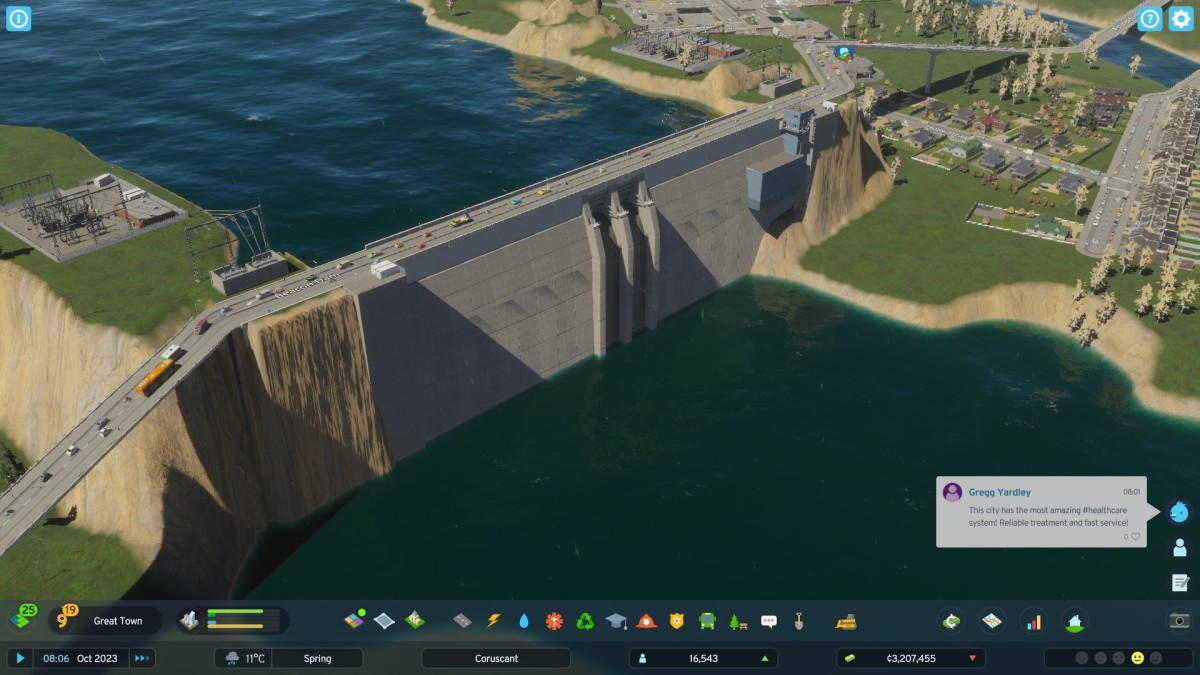
Speaking of those, buildings like hospitals can now be upgraded with additional capacity and other bonuses to allow them to keep up with the growth of your city by themselves, which is especially great for players preferring to build tall rather than wide cities. Again, it’s all about expressing yourself. You can also set up city districts and assign public service buildings to them, managing your town more efficiently.
As usual, you’ll be able to play around with your budget and enact mayoral decrees and policies to shape your city. Ban cars in the inner city or defund healthcare services to counteract an explosive population growth you weren’t ready to handle – yes, part of the fun of Cities: Skylines 2 is to do ridiculous or radical things as you deal with the consequences of bad decisions you made hours ago.
Cities: Skylines 2 features dynamic seasons, so snowfalls can happen even if there’s no snow at the beginning of your game, and a much-requested new hybrid zone that contains buildings combining residential and commercial functions – such mixed housing feels natural especially for the European theme. Speaking of which, you get to choose between a European and North American theme once again, which changes how buildings, signs, and vehicles like ambulances look and sound, but has no gameplay impact.
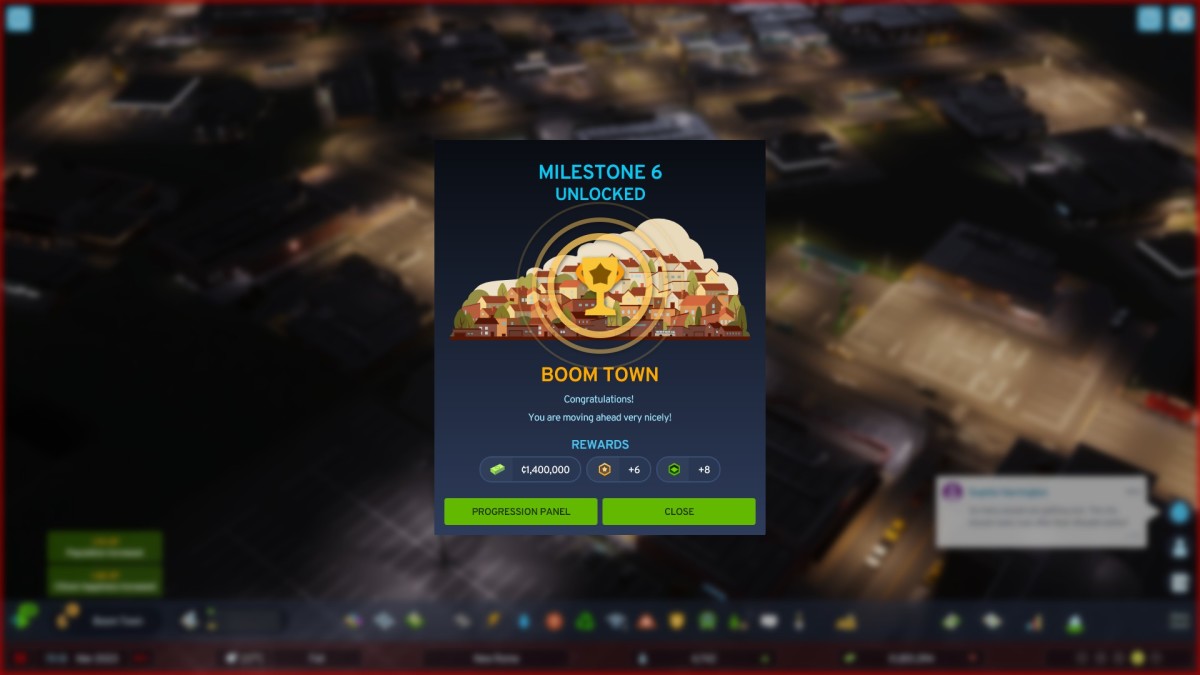
That dynamism from seasons is noticeable in other environmental aspects as well: Wind and groundwater are fully simulated now, meaning you’ll have to pay more attention when creating industrial areas – you don’t want all that smog blown right into your city.
Signature buildings are another very cool addition to the game. Based on what you’re doing in your city, you unlock special buildings that provide bonuses to the entire city or their surrounding area. A pop star's mansion will make every resident near it feel good about themselves while an oil refinery boosts the entire city’s industrial output.
There will be sources more qualified than me to speak about the very deep systems like traffic, one of the banes of the original, but from what I can tell from my time with the game vehicles were pretty smart and efficient at using their lanes and finding their way around the city, even in a grand metropolis. If your city has become a hellhole of traffic jams, then it’s probably your own fault.
Visually, Cities: Skylines 2 has a more realistic look to it than the original – it’s a pretty game. Seeing your city in the night with all the lights on is quite spectacular, though the day/night cycle isn’t exactly great for building – try placing down a road grid when the screen is darker than a Hollywood movie. You can also terraform to your heart’s delight, creating whichever terrain you want.
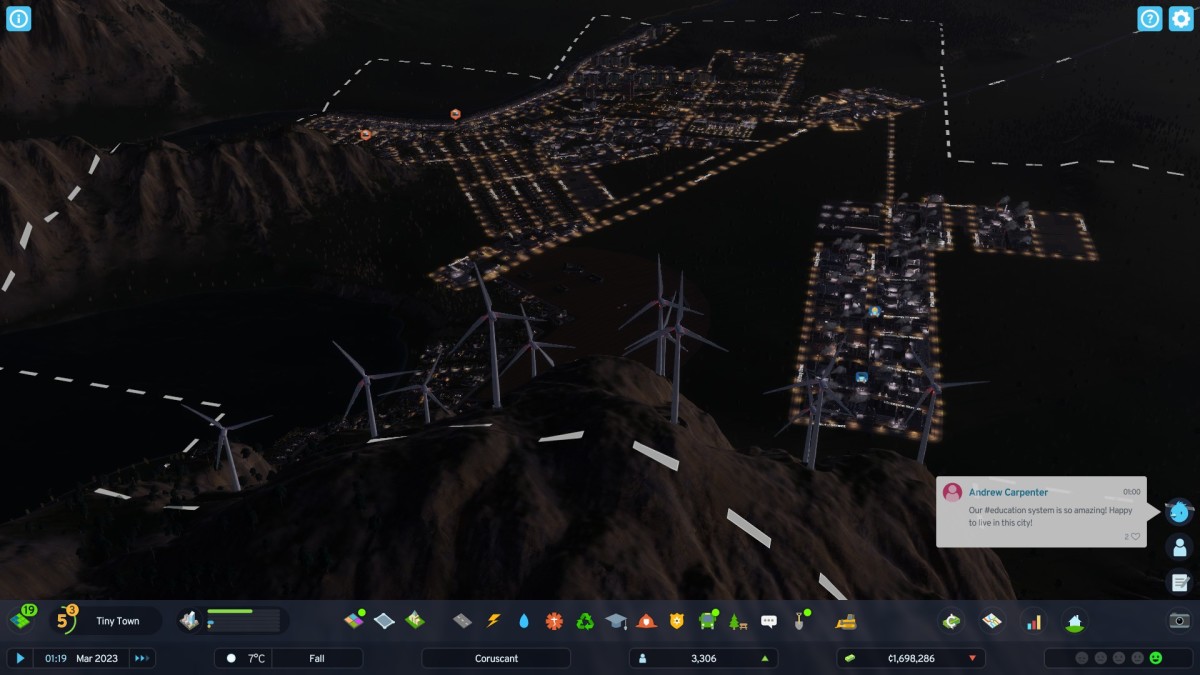
Content-wise any veterans of the first game will probably feel a bit restricted after years of playing with DLC and mods – it’s the whole Civilization phenomenon where the new game feels like it has a little less to offer than the previous one, which had years of support behind it. Due to Cities: Skylines 2’s overall improvements, I don’t think this is going to be a prevalent feeling.
Cities: Skylines 2 is a superb sequel in terms of gameplay and presentation – so much feedback from the community on the first game has been rolled into this title.
However, there is one big caveat to all this, which is performance. Everything runs very smoothly for a while, but as your city grows things start to stutter and vehicles bunny hop through your town’s roads instead of driving. For me, those problems began somewhere around getting 10,000 people in my town, which isn’t a lot in the great picture of things – after all, you’re supposed to be able to make cities with half a million people in them.
My issues worsened a lot as soon as I started to experiment with terraforming areas near the water to build a hydroelectric power plant. The developers sent through a bunch of options we could try out to mitigate performance issues, but those only somewhat helped – at some point, the game simply struggled. Colossal Order already publicly said that it missed its benchmark for performance ahead of release and vowed to get this fixed as a priority after launch. And it has to, because it made such a fantastic product in every other aspect that it’d be a shame if it were never to unfold its full potential due to technical limitations.
While some stuttering wouldn’t be the end of the world, as you don’t exactly have to do real-time micromanagement in this game like in an RTS, the severity of the issues has a clear negative effect on enjoyment in this case. I, for one, was panic-saving all the time out of fear that the game would crash soon. It never did that, thankfully, but reloading from time to time helped with managing performance a bit.
Minor annoyances I noticed were that some funky road designs seemed to overwhelm the automatic zone generation, resulting in the creation of areas that simply did not fit into the terrain as I made it, and that underground building can be a little tedious. There doesn’t seem to be an indicator of the depth certain objects are at, so you either need to remember how deep you built stuff or have to work on a trial-and-error basis. Firemen also don’t seem to have animation for quenching flames, which is a little disappointing – but I understand that you have to put a limit on those super minor details at some point, otherwise you’ll never be done.
Even in this subpar technical state, Cities: Skylines 2 is a potent and captivating sandbox that’ll see the hours fly by as you engage with it. It’s a worthy successor to the title that dethroned the mighty SimCity and will define the genre for the years to come. Official as well as modded content will surely supply players with even more toys and tools in the future.
Score: 8/10
- Visuals: 8/10
- Sound: 7/10
- Gameplay: 10/10
- Technical: 6/10
Version tested: PC.
